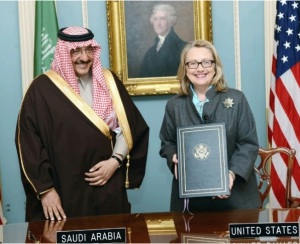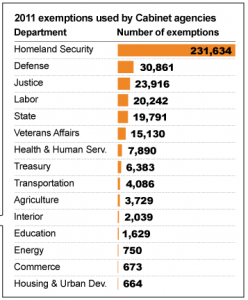As the Dzhokhar Tsarnaev trial pauses for the Marathon and the attack anniversary (and, ostensibly, to give the defense time to line up their witnesses), some competing sides have aired their views about the story not being told at the trial.
An odd piece from BoGlo’s Kevin Cullen quotes a cop asking why the FBI Agents who interviewed Tamerlan Tsarnaev in 2011 did not recognize him from surveillance videos.
“Who were the FBI agents who interviewed Tamerlan Tsarnaev after the Russians raised questions about him two years before the bombings, and why didn’t they recognize Tamerlan from the photos the FBI released?” he asked.
That’s actually a great question. But then Cullen goes onto make some assertions that — if true — should themselves elicit questions, questions he doesn’t ask. He marvels at the video analysis after the event, but doesn’t mention that the FBI claims the facial recognition software it has spent decades developing didn’t work to identify the brothers. He lauds the FBI for finding Dzhokhar’s backpack in a dumpster, but far overstates the value of the evidence found inside (remember, among other things found on a thumb drive in it was a rental application for Tamerlan’s wife). Cullen also overstates the FBI’s evidence that the bombs were made in Tamerlan’s Cambridge apartment, and so sees that as a question about why Tamerlan’s wife, Katherine, wasn’t charged (forgetting, I guess, that she was routinely gone from the apartment 70 hours a week), rather than a question about all the holes in FBI’s pressure cooker story: Why did Tamerlan pay cash for pressure cookers — as FBI suggests he did — all while carrying a mobile GPS device that he brought with him when trying to make his escape? Where did the other two pressure cookers (the third pressure cooker used as a bomb, and the one found at the apartment) come from?
Masha Gessen — who just wrote a book about the case that I have not yet read — asks some of the same questions in a NYT op-ed in a piece that also highlights the government’s flawed claims about radicalization at the core of this case.
Even worse, two critical questions have not been answered. Where were the bombs built? Investigators have testified that they were not built at the older brother’s apartment or in the younger brother’s dorm room. Were they built in someone else’s apartment, house or garage? If so, who, and was he a knowing accomplice? Did he help in any other way?
The other big question is: Why did the F.B.I. fail to identify Tamerlan Tsarnaev, the older brother, who had been fingered as a potential terrorist risk two years before the bombing and interviewed by field agents? Within 24 hours of the bombing, on April 15, 2013, investigators focused on images of the brothers in surveillance tapes recovered from the scene. Yet they had no names — and more than two days later they released the photos to the public, asking for help with identifying the suspects. How is it possible that someone who had been interviewed by a member of the local Joint Terrorism Task Force could not be identified from the pictures?
Note, I think Gessen overstates how strongly the government has said the bombs weren’t made at the Cambridge apartment, but it is consistent with the evidence presented that they weren’t.
Compare these decent questions with Janet Napolitano’s take — not so much on the trial, but on Gessen’s book.
Before I get into the key graph of her review, consider Napolitano’s role here. Her agency — especially Customs and Border Patrol — came in for some criticism in the Joint IG Report on the attack, because they may not have alerted the FBI to Tamerlan Tsarnaev’s travel to and from Russia in 2012, because they treated Tamerlan as a low priority and therefore didn’t question him on his border crossings (the trial record may indicate Tamerlan had Inspire on his computer when he traveled to Russia), and because the CBP record on Tamerlan went into a less visible status while he was out of the country, meaning he evaded secondary inspection on the way back into the country as well. Yet she mentions none of those crucial details about DHS’s role in missing Tamerlan’s travel and increasing extremism in her review.
Rather, she describes her agency as a valiant part of the combined effort to hunt down the attackers.
As secretary of homeland security, I immediately mobilized the department to assist Boston emergency responders and to work with the F.B.I. to identify the perpetrators. Because the Boston Marathon is an iconic American event, we suspected terrorism, but no group stepped forward to claim credit. Massive law enforcement resources — local, state and federal — had to be organized and deployed so that, within just a few days, we had narrowed the inquiry from the thousands of spectators who had come to cheer on the runners to two, who had come to plant bombs.
Only much later in her review does Napolitano makes a defense of the government failure to prevent this attack, though once again she makes no mention of her own agency’s role in failing to stop the attack. As Napolitano tells it, this is about the FBI and it’s just “armchair quaterbacking.”
In the course of armchair quarterbacking that followed the bombing, it was revealed that the Russian Federal Security Service, known as the F.S.B., had notified the F.B.I. in 2011 about Tamerlan’s presence in the United States. Although criticized for inadequate follow-up, the F.B.I. actually interviewed Tamerlan and other household members at least three times in 2011. Further requests to the F.S.B. for details went unanswered. Other than putting Tamerlan under 24-hour surveillance, it is difficult to ascertain what more the F.B.I. could have done — according to Gessen, Russia routinely presumes all young urban Muslim men to be radical.
Much of the rest of Napolitano’s review focuses on the government’s theory of radicalization and the Tsarnaev family’s collective failure to achieve the American Dream (which, I guess, is what Gessen was debunking in her op-ed the next day), returning the story insistently to one about radicalization. Except then, having emphasized how many times the FBI had contact with Tamerlan in 2011, she scoffs at the questions that might raise and Gessen’s reliance on evidence the government itself has introduced into the public record.
In the final chapters, however, the book becomes curiouser and curiouser; Gessen seems to become a conspiracy theorist. She postulates that the F.B.I. recruited Tamerlan as an informant during their visits to the Tsarnaev home in 2011. She then surmises that Tamerlan went rogue and participated in the killing of three friends with whom he dealt marijuana. She goes further, and suggests that after the bombings, the F.B.I. delayed telling Boston law enforcement about Tamerlan’s identity because they wanted to reach him first, kill him and hide his presence as an informant. Gessen likens this alleged behavior to the F.B.I.’s use of sting operations, and she implies that the bureau has been entrapping defendants as opposed to finding real terrorists. And, finally, relying on the words of “several” unnamed explosives experts, she asserts that the Tsarnaevs must have had help constructing the bombs, despite the presence of explicit instructions on the Internet and in Inspire, a jihadist magazine.
How is Gessen a conspiracy theorist because she “surmises that Tamerlan … participated” in the 2011 Waltham killings? That claim came from the FBI itself! The FBI says Ibragim Todashev was confessing to that fact when they killed him. And how is suggesting the bombs used at the Marathon (as distinct from those thrown in Watertown) could not have come directly from Inspire be a conspiracy theory when that is the testimony the defense elicited from FBI’s own bomb expert on cross examination?
Effectively, Janet Napolitano, whose agency rightly or wrongly received some of the criticism for failing to prevent this attack, completely ignores the questions about prevention and then dismisses questions that arise out of the government’s failure to prevent the attack as a conspiracy theory.
Napolitano’s choice to write (and NYT’s choice to publish) a critical review of a book pointing out problems with the narrative of the attack she herself has been pitching actually got me thinking: Imagine Robert Mueller writing such a review? Had he done so, the inappropriateness of it, the absurdity of deeming claims made by the FBI a conspiracy theory, and his own agency’s role in failing to prevent the attack would have been heightened. Not to mention, he likely would have had a hard time dismissing the real questions about the provenance of the bombs, given that his former agency claims not to know the answers to them. And that made me realize that having Napolitano write this review worked similarly to the way the prosecution’s parade of witnesses who hadn’t done the primary analysis on the evidence in the case did. It gave official voice to the chosen narrative, without ever exposing those who might be able to answer the still outstanding questions to question.
For what it’s worth, I have a few more questions about the attack that — like Cullen and Gessen — I regret will likely go unanswered. Or rather, perhaps another theory about the government’s implausible claim not to have IDed the brothers until they got DNA from Tamerlan on April 19th.
As I mentioned, no one wants to talk about why facial recognition didn’t work which — if true — ought to have led to congressional hearings and the defunding of the technology. The FBI wants you to believe that they couldn’t ID a guy they had had in a terrorist watchlist and extended immigration records on and Congress wants you to believe that would be acceptable performance for an expensive surveillance system.
I’ve also tracked the government’s odd use of GPS data in the trial. They used cell tower information based off the brothers’ known handsets (which they only got in smashed condition days later) to track their movement at the race. They used a series of GPS devices to track the purchases of the materials used in the attack and to track the brothers in the stolen Mercedes (though their claims about how they tracked the Mercedes still don’t add up). There’s something missing from this story, and I increasingly wonder whether it’s the use of a Stingray or similar device, which we know even local authorities use in the case of public events like protests or sporting events, which might have been able to pinpoint calls made between phones using the same “cell” at the race, and with it, pinpoint the phones we know were registered under the brothers’ real names.
So here’s my conspiracy theory, Janet Napolitano: Not only do I think claims Tamerlan was an informant ought to be at least assessed seriously (though I also think the Russians clearly are not telling us what they believed him to be, either), which might be one explanation for FBI’s dubious claims not to have IDed the brothers for over 3 days. But I also think the government pursued this case with an eye towards what intelligence they were willing to admit at trial — and we know they refuse to admit how sophisticated their use of Stingrays is, and we should assume they refuse to admit how well facial recognition technology works, either.
That is, in addition to the other real questions and possible explanations for the delay, I think it possible that the FBI had to create a manhunt so as to hide the tools that IDed the brothers far earlier than they let on.
Update: I meant to add that I think the timing of the recent Stingray releases to be curious. Basically, the dam holding back disclosures of the FBI’s secrecy on Stingrays burst on Wednesday, April 8, as the ACLU, Baltimore, and two other jurisdictions got Non-Disclosure Agreements on the same day, after the Tsarnaev case had gone to the jury. That’s as conveniently timed, it seems, as the April 3 release of the After Action report, which Massachusetts had held since December. Also remember that the government doesn’t have to disclose PRTT data to defendants unless it uses that evidence at trial (and has suggested it has PRTT data on other terrorist defendants that it doesn’t have to turn over). So if they did use a Stingray to ID the brothers at all, they would claim they didn’t have to disclose it, but wouldn’t want to make the capability too obvious until after the defense lost any opportunity to make a constitutional claim.
![[image: Daniele Devoti via Flickr]](https://www.emptywheel.net/wp-content/uploads/2016/01/MondayCoffee_DanieleDevoti-Flickr-300x200.jpg)




